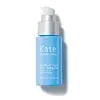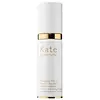What's inside
What's inside
 Key Ingredients
Key Ingredients

 Benefits
Benefits

 Concerns
Concerns

 Ingredients Side-by-side
Ingredients Side-by-side

Water
Skin ConditioningCoconut Alkanes
EmollientPentylene Glycol
Skin ConditioningNiacinamide
SmoothingSalicylic Acid
MaskingCaprylyl Methicone
Skin ConditioningGlycerin
HumectantPropanediol
SolventCetearyl Olivate
Polysilicone-11
Potassium Cetyl Phosphate
EmulsifyingSorbitan Olivate
EmulsifyingCarbomer
Emulsion StabilisingMicrocitrus Australis Fruit Extract
Skin ConditioningMicrocitrus Australasica Fruit Extract
Lens Esculenta Fruit Extract
Skin ConditioningPyrus Malus Fruit Extract
Skin ConditioningCitrullus Lanatus Fruit Extract
Skin ConditioningCitrus Glauca Fruit Extract
HumectantSodium Lactate
BufferingPhytosphingosine
Skin ConditioningAdenosine
Skin ConditioningDecyl Glucoside
Cleansing1,2-Hexanediol
Skin ConditioningSodium PCA
HumectantAlpha-Glucan Oligosaccharide
CleansingMaltodextrin
AbsorbentPolyglyceryl-3 Caprate
EmulsifyingButylene Glycol
HumectantAminomethyl Propanol
BufferingPolysorbate 20
EmulsifyingCaprylhydroxamic Acid
Zinc PCA
HumectantThymol
AntimicrobialTerpineol
MaskingHexylene Glycol
EmulsifyingCaprylyl Glycol
EmollientPolydextrose
HumectantDextrin
AbsorbentAmylopectin
Lactobacillus Ferment
Skin ConditioningPhenoxyethanol
PreservativeDisodium EDTA
Sodium Benzoate
MaskingPotassium Sorbate
PreservativeWater, Coconut Alkanes, Pentylene Glycol, Niacinamide, Salicylic Acid, Caprylyl Methicone, Glycerin, Propanediol, Cetearyl Olivate, Polysilicone-11, Potassium Cetyl Phosphate, Sorbitan Olivate, Carbomer, Microcitrus Australis Fruit Extract, Microcitrus Australasica Fruit Extract, Lens Esculenta Fruit Extract, Pyrus Malus Fruit Extract, Citrullus Lanatus Fruit Extract, Citrus Glauca Fruit Extract, Sodium Lactate, Phytosphingosine, Adenosine, Decyl Glucoside, 1,2-Hexanediol, Sodium PCA, Alpha-Glucan Oligosaccharide, Maltodextrin, Polyglyceryl-3 Caprate, Butylene Glycol, Aminomethyl Propanol, Polysorbate 20, Caprylhydroxamic Acid, Zinc PCA, Thymol, Terpineol, Hexylene Glycol, Caprylyl Glycol, Polydextrose, Dextrin, Amylopectin, Lactobacillus Ferment, Phenoxyethanol, Disodium EDTA, Sodium Benzoate, Potassium Sorbate
Water
Skin ConditioningDimethicone
EmollientPropanediol
SolventPolysilicone-11
Polysorbate 20
EmulsifyingIsocetyl Stearate
EmollientVolcanic Soil
Skin ConditioningGlyceryl Stearate
EmollientIsohexadecane
EmollientPEG-100 Stearate
Parfum
MaskingRetinol
Skin ConditioningAscorbic Acid
AntioxidantTocopheryl Acetate
AntioxidantHyaluronic Acid
HumectantPhysalis Angulata Extract
Skin ProtectingSodium Hyaluronate
HumectantTocopherol
AntioxidantHexapeptide-2
BleachingEthylhexylglycerin
Skin ConditioningAmylopectin
PEG-7 Trimethylolpropane Coconut Ether
EmulsifyingAdenosine
Skin ConditioningHydroxyethyl Acrylate/Sodium Acryloyldimethyl Taurate Copolymer
Emulsion Stabilising1,2-Hexanediol
Skin ConditioningButylene Glycol
HumectantAmmonium Polyacryloyldimethyl Taurate
Emulsion StabilisingCaprylic/Capric Triglyceride
MaskingPolyisobutene
Sorbitan Isostearate
EmulsifyingStearic Acid
CleansingPolysorbate 80
EmulsifyingDimethiconol
EmollientCaprylhydroxamic Acid
BHA
AntioxidantBHT
AntioxidantDisodium EDTA
Water, Dimethicone, Propanediol, Polysilicone-11, Polysorbate 20, Isocetyl Stearate, Volcanic Soil, Glyceryl Stearate, Isohexadecane, PEG-100 Stearate, Parfum, Retinol, Ascorbic Acid, Tocopheryl Acetate, Hyaluronic Acid, Physalis Angulata Extract, Sodium Hyaluronate, Tocopherol, Hexapeptide-2, Ethylhexylglycerin, Amylopectin, PEG-7 Trimethylolpropane Coconut Ether, Adenosine, Hydroxyethyl Acrylate/Sodium Acryloyldimethyl Taurate Copolymer, 1,2-Hexanediol, Butylene Glycol, Ammonium Polyacryloyldimethyl Taurate, Caprylic/Capric Triglyceride, Polyisobutene, Sorbitan Isostearate, Stearic Acid, Polysorbate 80, Dimethiconol, Caprylhydroxamic Acid, BHA, BHT, Disodium EDTA
Ingredients Explained
These ingredients are found in both products.
Ingredients higher up in an ingredient list are typically present in a larger amount.
1,2-Hexanediol is a synthetic liquid and another multi-functional powerhouse.
It is a:
- Humectant, drawing moisture into the skin
- Emollient, helping to soften skin
- Solvent, dispersing and stabilizing formulas
- Preservative booster, enhancing the antimicrobial activity of other preservatives
Adenosine is in every living organism. It is one of four components in nucleic acids that helps store our DNA.
Adenosine has many benefits when used. These benefits include hydrating the skin, smoothing skin, and reducing wrinkles. Once applied, adenosine increases collagen production. It also helps with improving firmness and tissue repair.
Studies have found adenosine may also help with wound healing.
In skincare products, Adenosine is usually derived from yeast.
Learn more about AdenosineWe don't have a description for Amylopectin yet.
Butylene Glycol (or BG) is used within cosmetic products for a few different reasons:
Overall, Butylene Glycol is a safe and well-rounded ingredient that works well with other ingredients.
Though this ingredient works well with most skin types, some people with sensitive skin may experience a reaction such as allergic rashes, closed comedones, or itchiness.
Learn more about Butylene GlycolCaprylhydroxamic Acid is a chelating agent.
Chelating agents help prevent metal ions from binding to other ingredients. This helps prevent unwanted reactions and effects from using the product.
Caprylhydroxamic Acid is often used with natural antimicrobial products as an alternative to preservatives.
Learn more about Caprylhydroxamic AcidDisodium EDTA plays a role in making products more stable by aiding other preservatives.
It is a chelating agent, meaning it neutralizes metal ions that may be found in a product.
Disodium EDTA is a salt of edetic acid and is found to be safe in cosmetic ingredients.
Learn more about Disodium EDTAPolysilicone-11 is a film-forming silicone that creates a non-tacky and matte finish on the skin. It's commonly used to improve texture, absorb excess oil, and help active ingredients spread evenly.
Due to its "rubber-like" structure, it stays on the skin's surface instead of being absorbed. On the skin, it creates a flexible layer that enhances wearability and stability.
Polysorbate 20 is made by combining ethoxylation of sorbitan, ethylene oxide, and lauric acid. It is a mild cleansing agent, surfactant, and emulsifier.
As a surfactant, it helps collect dirt and oils for washing. Emulsifiers prevent oils and water from separating.
Polysorbate 20 also adds scent to a product. Since it is made using sorbitol, it has a sweet scent. Sorbitol can also be found in fruits such as apples and peaches.
The lauric acid used to create Polysorbate 20 is often derived from coconuts.
Polysorbate 20 may not be fungal acne safe.
Learn more about Polysorbate 20Propanediol is an all-star ingredient. It softens, hydrates, and smooths the skin.
It’s often used to:
Propanediol is not likely to cause sensitivity and considered safe to use. It is derived from corn or petroleum with a clear color and no scent.
Learn more about PropanediolWater. It's the most common cosmetic ingredient of all. You'll usually see it at the top of ingredient lists, meaning that it makes up the largest part of the product.
So why is it so popular? Water most often acts as a solvent - this means that it helps dissolve other ingredients into the formulation.
You'll also recognize water as that liquid we all need to stay alive. If you see this, drink a glass of water. Stay hydrated!
Learn more about Water